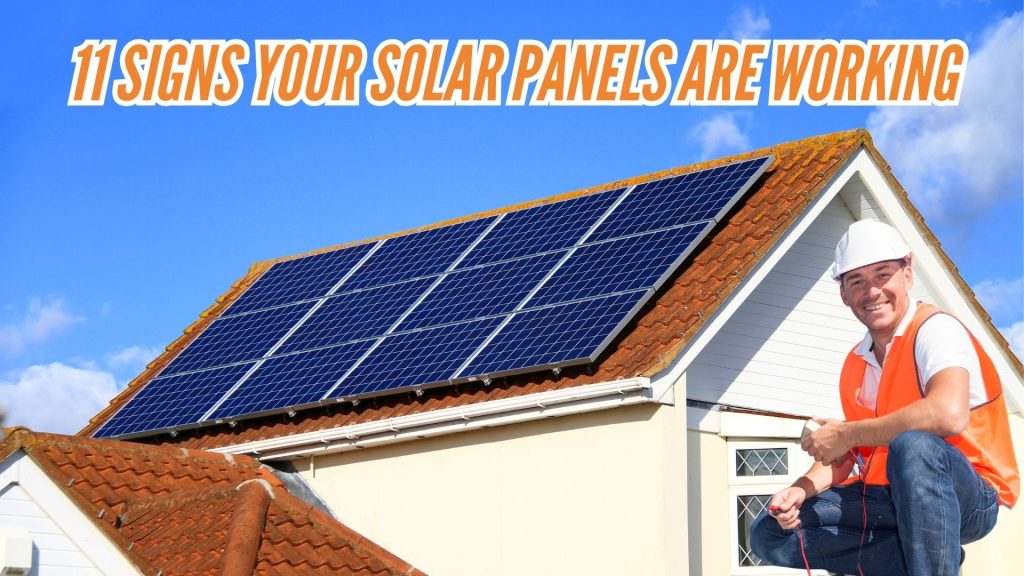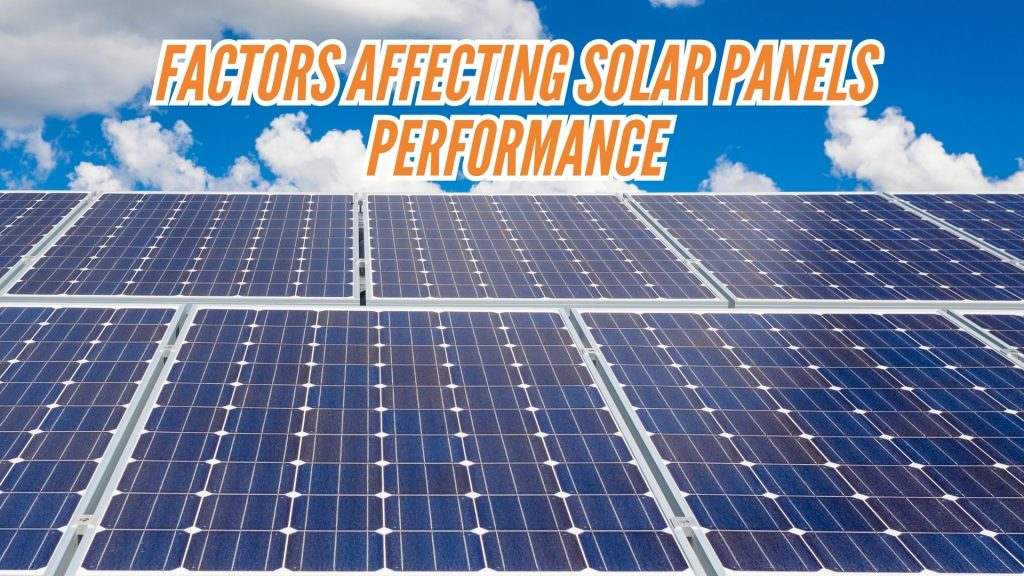Solar panels have become a go-to solution for eco-conscious homeowners in California looking to reduce electricity bills and support sustainable energy. But how do you ensure these investments are working effectively? Monitoring the performance of your solar panels is essential for maintaining efficiency and maximizing energy output.
Whether through physical checks or using technological tools, understanding how to verify your system’s functionality is vital to keep your home powered by clean, renewable energy.
Why Is It Important to Know If Your Solar Panels Are Working?
Knowing if your solar panels are operating properly is crucial to fully benefit from their energy-saving potential. Inefficient panels can lead to higher utility bills and reduced overall energy savings. Regular monitoring helps catch issues early, ensuring that your system continues to perform optimally and prolongs the lifespan of your solar investment.
Signs Your Solar Panels Are Working Properly

Ensuring that your solar panels are functioning correctly is essential for maximizing energy efficiency and safeguarding your investment.
Here are detailed indicators and methods to verify the health and performance of your solar panel system:
1. Inverter Status and Indicators
The inverter is the backbone of your solar power system, converting DC electricity into the AC power used in your home. Regularly check the inverter’s indicator lights; a steady green light generally signals that the system is working as expected. However, a flashing orange or red light often points to issues such as grid connection faults or component malfunctions, requiring immediate attention from your installer or a solar technician.
2. Solar Meter Readings
Modern solar systems often come with solar meters that track energy production. A functioning meter should show a steady increase in total kilowatt-hours during sunny periods. If readings stagnate or decrease unexpectedly, this suggests a problem with energy generation that needs investigation.
3. Electric Bill Analysis
Comparing current utility bills to those before installing your solar panels provides insight into their performance. Ideally, a significant reduction in energy costs indicates efficient operation. If your bills spike or fail to show the expected savings, it may signal that your solar panels are underperforming or malfunctioning.
4. Monitoring Tools and Apps
Many solar installations come with digital monitoring tools that display real-time and historical energy production. These platforms, accessible via computers or mobile apps, offer convenient ways to track performance, identify irregularities, and receive alerts for potential issues. Continuous monitoring through such apps ensures that your system maintains optimal output.
5. Visual Inspections for Physical Obstructions
Regularly inspect your panels for any physical obstructions, such as leaves, dust, or bird droppings, that can block sunlight and lower efficiency. Dirt buildup or debris can reduce energy output substantially, so periodic cleaning and visual checks are recommended to keep panels performing well.
6. Professional Maintenance and Troubleshooting
Scheduling professional inspections annually is a proactive measure to identify hidden issues that might not be visible during routine checks. Professional technicians can examine the entire system, from wiring and panel connections to the inverter’s performance, ensuring everything functions smoothly.
7. Weather and Seasonal Performance Variations
Solar energy production varies with the weather and seasons. Panels tend to produce more energy on clear, sunny days and less during cloudy or rainy periods. Analyzing these variations helps differentiate between normal seasonal drops and potential system faults.
8. Error Codes and Advanced Diagnostics
Advanced systems might show error codes or alerts if an issue arises. Familiarize yourself with what these codes mean using the manufacturer’s guidelines or online resources. When in doubt, consulting a professional is advisable to prevent further complications.
When to Seek Professional Assistance
If simple checks like monitoring apps, meter readings, or inverter lights indicate persistent issues, it’s crucial to contact your solar provider or a certified technician. Professionals can conduct in-depth diagnostics, check for wiring faults, and perform comprehensive maintenance to restore system efficiency.
Key Points to Remember
- Regular monitoring and proactive maintenance help maintain peak performance.
- Keep your panels clean and free from obstructions.
- Utilize technology for real-time tracking to detect any declines early.
- Annual professional inspections safeguard long-term functionality.
These measures collectively ensure that your solar panels continue to generate optimal energy and provide substantial savings over their lifespan.
Factors That Can Affect Solar Panel Performance
The efficiency and output of solar panels are influenced by various factors, each playing a significant role in overall energy production. Understanding and managing these elements can help maintain optimal solar panel performance.

Sunlight Exposure
The amount of sunlight a solar panel receives directly impacts its energy output. Regions with abundant sunlight, such as areas near the equator, benefit from higher energy production. Conversely, panels in regions with limited sun exposure may produce less energy. Ensuring panels are placed in locations that maximize sun exposure throughout the day is crucial.
Orientation and Tilt Angle
The orientation and tilt of solar panels determine the amount and angle of sunlight they receive. For maximum efficiency, panels in the Northern Hemisphere should ideally face south, while those in the Southern Hemisphere should face north. Adjusting the tilt angle to match the latitude of the installation site ensures optimal energy absorption throughout the year. Correct orientation helps panels capture direct sunlight, improving overall efficiency.
Shading and Obstructions
Even minimal shading from trees, buildings, or other structures can significantly reduce the performance of solar panels. Panels are often connected in series, meaning that shading on one part of a panel can decrease the output of the entire string. Conducting a shading analysis before installation and taking steps like trimming trees or repositioning panels can help mitigate these effects.
Temperature and Heat Management
Contrary to common belief, higher temperatures can negatively impact solar panel efficiency. Panels are most efficient at cooler temperatures, as excessive heat increases internal resistance and reduces output. The “temperature coefficient” of a panel measures how much performance drops as temperature rises. Proper ventilation and spacing between panels and the roof facilitate airflow, helping dissipate heat and maintain efficiency.
Cleanliness of Panels
Dirt, dust, and debris accumulating on the surface of solar panels can block sunlight and reduce their efficiency. Regular cleaning—typically once or twice a year—can improve energy capture by up to 5%. Cleaning should be done with non-abrasive materials and at cooler times of day to prevent thermal shock.
Weather Conditions
Weather significantly affects panel performance. While solar panels can still generate power on cloudy days, output is typically reduced. Additionally, extreme weather, like hail or heavy storms, can damage panels if they are not designed or installed properly. Understanding local weather patterns and planning for them can help maintain consistent energy production.
Panel Age and Quality
The age and quality of the solar panels also play a role. High-quality panels often retain their efficiency longer and provide a better return on investment. Over time, all panels experience a gradual decline in efficiency, but premium models tend to perform better over decades.
Roof Orientation and Structural Factors
For rooftop installations, the structure’s orientation is essential. South-facing roofs are optimal in the Northern Hemisphere, while ensuring panels are angled between 30° and 45° helps capture sunlight perpendicularly, improving output. Adjusting panel tilt seasonally can further optimize energy capture.
Maintenance and Regular Inspections
Periodic inspections can catch issues like loose connections, wiring problems, or module damage that may not be visible during routine checks. Addressing these promptly can prevent energy losses and extend the system’s lifespan. Establishing a maintenance schedule that includes checking and tightening connections is beneficial for long-term performance.
Ventilation and Cooling Solutions
Implementing solutions such as natural ventilation or active cooling technologies helps manage panel temperatures. Proper spacing and airflow beneath panels prevent overheating, maintaining consistent performance and protecting the panels’ longevity.
By considering these factors, homeowners and businesses can better manage their solar systems for sustained, efficient energy production.
Regular cleaning, strategic installation, and proper maintenance contribute significantly to optimizing solar panel performance and ensuring a reliable renewable energy source.
FAQs
How do solar panels work?
Solar panels harness sunlight and convert it into electricity through photovoltaic (PV) cells. These cells generate direct current (DC) electricity, which is then converted into alternating current (AC) by an inverter, making it usable for home appliances. If your panels produce more energy than needed, the excess can be stored in a battery or sent back to the grid for credits under net metering programs.
Do solar panels function in cloudy or rainy weather?
Yes, solar panels can still generate electricity on cloudy or rainy days, although at reduced efficiency. They typically produce around 10-25% of their typical output during such conditions. While their output is lower than on sunny days, advancements in panel technology have improved energy capture even during suboptimal weather.
What happens to solar panels during extremely hot weather?
High temperatures can reduce the efficiency of solar panels. Most panels are rated for optimal performance around 77°F (25°C). When the temperature rises above this point, output can decrease due to increased resistance within the solar cells. Choosing panels with a lower temperature coefficient and ensuring proper ventilation can help mitigate these effects.
How long do solar panels last?
Most solar panels are built to last between 25 to 30 years or more. They come with warranties that typically guarantee at least 80% production capacity after 25 years. Maintenance and quality of installation can impact their longevity.
Are solar panels expensive to maintain?
No, solar panels are generally low-maintenance. Cleaning them once or twice a year to remove dust and debris is usually sufficient. Most panels come with long warranties that cover defects and performance issues, reducing maintenance costs. Regular inspections can help identify potential problems early.
How does shade affect solar panel performance?
Shading can significantly impact panel efficiency, as solar cells connected in series can have their output reduced if even a small section is shaded. Modern systems may include micro-inverters or optimizers to minimize shading issues and ensure that only the affected panel is impacted, not the entire system.
What happens if my system has technical issues?
If you suspect a performance issue with your solar system, it’s important to review monitoring data and contact your installer if necessary. Installers can assess data from the inverter and may diagnose the problem remotely. If required, they will arrange a visit to inspect and fix the system.
Can solar panels withstand severe weather conditions?
Yes, solar panels are designed to endure harsh weather, including hail and strong winds. They are tested for durability to ensure resilience, but their performance may still be impacted temporarily during extreme weather.
Will I still receive an electric bill after installing solar panels?
If your system is grid-tied without battery storage, you will likely still receive an electric bill, especially if your consumption exceeds your solar generation. However, many homeowners find their bills reduced significantly, and some even achieve net-zero energy consumption.
Can I go off-grid with solar panels?
Going completely off-grid is possible but requires a sufficiently sized solar system and battery storage to provide energy during periods of low sunlight. This can be more expensive and complex than a grid-tied system. Most homeowners prefer staying grid-connected for backup power and to benefit from net metering.
Conclusion
Ensuring your solar panels are working effectively is essential to reap their full benefits. From inverter checks and electric meter readings to visual inspections and app monitoring, following these steps helps maintain optimal performance. If you ever notice issues that basic troubleshooting can’t resolve, reaching out to your solar provider for professional assistance is recommended.



